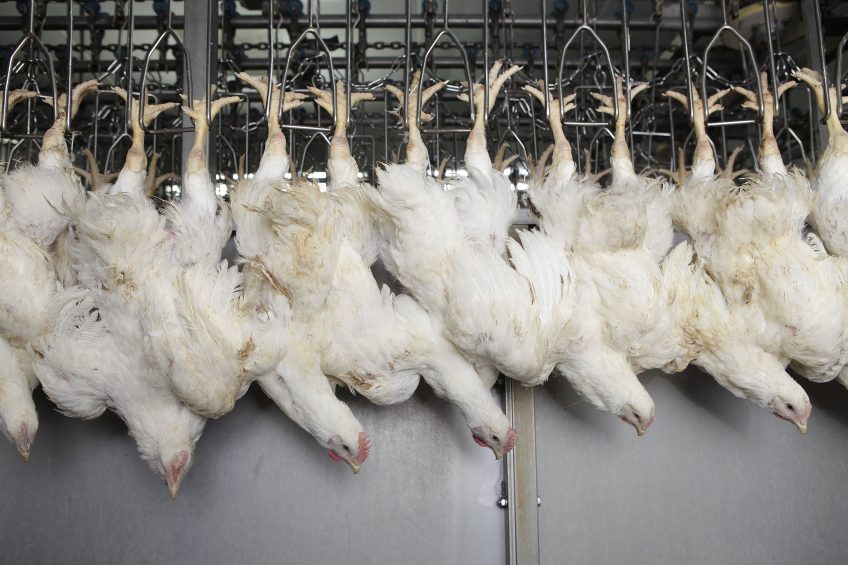Unclear scientific terminology affects bird welfare

Bird welfare can be impinged when legislators adopt unclear scientific definitions, according to recently published research.
Scientists looked at the use of terms “cervical dislocation” and “stunning” in regulations for on-farm poultry slaughter and the role of scientific evidence in developing the legislation.
They concluded that the use of limited scientific evidence can unwittingly lead to a reduction in animal welfare standards.
Clear definitions in terminology essential
In order to avoid such dilemmas, they suggesting that clear definitions in the terminology used was essential at all levels – from the design of experiments, the interpretation of results, the work of scientific committee and drafters of legislation to the level of competent authorities and enforcers.
And they suggested that if clarity was not achieved, it could lead to confusion and misunderstanding.
Terminology used in EU Regulation 1099/2009
Researchers John Kent and Attila Salamon, from the School of Biology and Environmental Science, University College, Dublin, Ireland, looked in particular at terminology used in EU Regulation 1099/2009, which covers the welfare of animals at time of slaughter.
The European Commission published a report last year on its implementation, “Preparation for Best Practice on the protection of animals at the time of killing,” which focused on areas that were identified as problematic during a recent audit. That summary concluded that areas of substantial disagreement between some consultees and the study team or between different groups of consultees on issues such as “qualifiers of certain methods of stunning in particular water bath and percussive blow to the head/cervical dislocation.”
Terminology used in the EU report unclear
The Commission makes it clear that the regulations require a bird to be unconscious before killing it and that stunning is a requirement, listing 5 methods. But during the review process, substantive comments were received from selected reviewers indicating considerable disagreement if not confusion in the use of terminology.
Comments such as “cervical dislocation (manual or mechanical) is not a stunning method. Birds do not become immediately insensible (it could be up to 30 sec) citing…. And these comments are based on a literature review.” Another respondent pointed out that “for neck dislocation just pulling the vertebrate apart is rarely sufficient. There needs to be an aspect of torsion involved.” And a third said that “manual cervical dislocation is badly described, it is not just “stretching” – the head must also be leveraged back.”
Other comments concern what are considered acceptable methodologies, such as “head only electrical stunning” stating that recent unpublished researched show that the method should not be recommended for geese, as contact impedance between electrodes and the head was too high for the voltage ranges available.
Kent and Salamon in their study, published in the International Journal of Poultry Science, say these matters are of some importance for a range of reasons:
- On-farm slaughter of poultry in small quantities is a traditional practice and the dispatch and preparation of poultry on-farm for human consumption is an ancient and traditional practice
- The welfare of animals on farm is increasingly becoming a matter of public concern and regulations such as 1099/2009 is enforced by competent authorities. Competence can then be an issue and a matter of scrutiny by professional bodies and others have consequences for both enforcers and primary carers of animals, as well as the animals themselves. Thus it is essential that terminology and techniques are understood in a clear and unambiguous manner.
Cervical neck dislocation – led to controversy
The study looks at how we have come to the point where cervical neck dislocation has led to controversy as to its efficacy as a slaughter and stunning method for farmyard poultry.
The study concludes that new techniques should first be validated before enforcement if animal welfare standards are to be improved or at least maintained.
New techniques such as head only electrical stunning in geese and penetrative captive bolt stunning in poultry should in the first instance be validated by the competent authority at either EU or Member State level before implementation and as the development of such new techniques will involve experimental work – which requires competent and regulated experimentation – it shout not be the remit of primary producers or associated enforcers.
“Stunning” – can be misleading
The use of terms, such as “stunning” can be misleading, especially if it fails to distinguish between the method (eg, electrical or penetrative captive bolt) and the desired effect (stun). Thus, the authors say, “electrical stunning” or “penetrative captive bolt stunning” can give a misleading sense of security that the techniques deliver a stun when it did not or that the stun may not be maintained. Similarly, terms such as “cervical dislocation” in poultry needs clear operational definition if its effects are to be understood.












